Bulk Water Company Plans to Export to India, East Asia and the Caribbean
‘Water has to come to the people,’ president of S2C Global tells Circle of Blue.
By Brett Walton
Circle of Blue
S2C Global—one of two companies in a partnership to export water from Sitka, Alaska to India—envisions water hubs in the Arabian Sea, East China Sea and Caribbean Sea, according to its 2010 second quarter U.S. Securities and Exchange Commission report.
In July, S2C announced a water hub in India for distributing water from Sitka, a town of 8,600 people on Baranof Island in the Alaskan panhandle. S2C’s president Rod Bartlett, who had previously restricted his comments to press releases, spoke with Circle of Blue on Wednesday about the company’s business plans.
While the East China and Caribbean hubs are planned expansions, S2C is concentrating on its Arabian Sea hub on the west coast of India to prove the feasibility of a regular bulk water trade. The company expects to complete its first shipment by the end of 2010.
Bartlett’s Bulk Water Vision
Bartlett sees bulk water as a logistics exercise. Pricing, supply and demand, transport costs and infrastructure must square. Only in the last 18 months has it become viable for large-volume water shipments, he said. The global economic crisis left a glut of tanker ships in its wake, pushing down the cost of chartering a vessel. Even cheaper are water bags, but the technology is still viewed as a promising curiosity.
The economy will eventually recover and charter prices will rise, but Bartlett expects the shipping trade will find a new equilibrium that offers bulk water purveyors entry into the market.
Distance, Desalination Issues May Stand in the Way
As befits the president of a company, Bartlett is bullish about his trade, but other people familiar with the bulk water industry are skeptical about the viability of an Alaska-to-India water business. Two concerns that came up most often in discussions were the price S2C is paying for the water and the transport distance between markets.
“They’re getting killed at dockside with a penny a gallon,” said Terry Spragg, designer of the Spragg Bag water delivery system, about S2C’s contract price with Sitka. “I could desalinate water for less than a penny a gallon right off my coast if you’re talking municipal and industrial purposes. If you’re talking bottled water, you could get water from Fiji cheaper. Fiji Water already has a market. I just don’t see how Alaska can compete shipping water at the dockside price they are trying to negotiate.”
“The premium market is the only way they could go and there are closer export markets with premium supplies: New Zealand and Tasmania,” Spragg added.
New Zealand is roughly 4,000 km closer to the Persian Gulf than Sitka: a considerable advantage because shipping costs are largely a function of distance.
Bartlett contends that distance is less a consideration than infrastructure. Sitka’s deep water port and dockside supply pipeline mean scale efficiencies for the amount of water that they can move.
“The direct competition is desalination,” Bartlett said. “But with desalination, the real costs are not reported. Many countries do not attach a market cost to the electricity used. They don’t factor the amortized cost of the plants into the per unit water cost, and they don’t account for the environmental costs.”
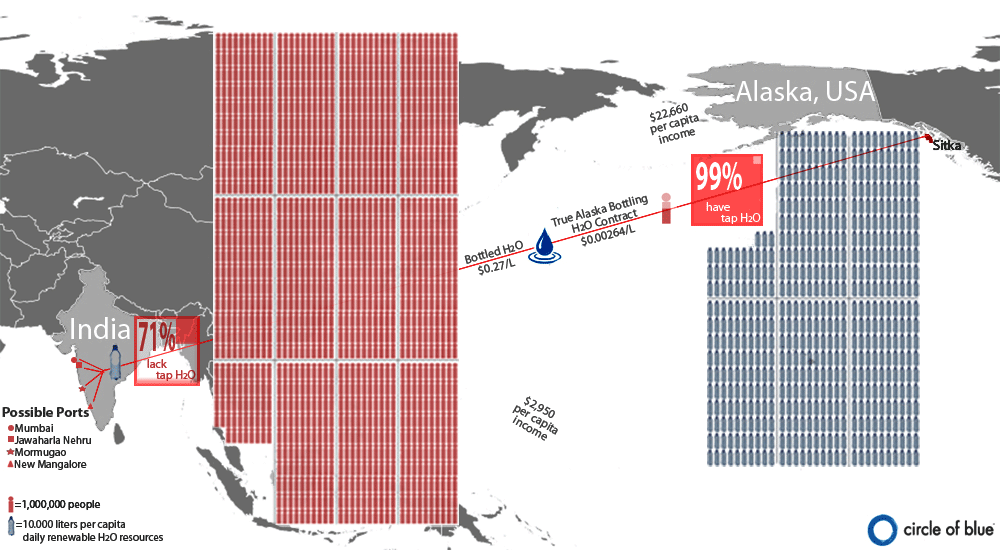
Strict environmental standards in Australia have driven up the cost of desalinated water to nearly a penny per gallon on average, according to an article in The New York Times. Bartlett says S2C can buy water from the city of Sitka, load it, ship it to India and unload it for $0.07 per gallon – a cost factor driving most of the skepticism. On the other hand, water shipments can be turned on and off in response to demand, thereby avoiding the capital burden of a multi-billion dollar desalination plant mothballed during a rainy period.
Not a Money Mecca
Besides pricing and location considerations, potential deals in the bulk water business as a whole have been undermined by past chicanery, according to John Anderson of CWE, Inc., a New Jersey-based company involved in bulk water logistics and consulting.
“I think some of the greed in the shipped water trade is adversely affecting any sale taking place,” Anderson said. “People think it’s a money Mecca, but it’s not.”
Anderson, who has worked in the industry since 1993, told Circle of Blue that tanker owners are the ultimate arbiters in the business since they control the means of transport. He knows tanker operators who have soured on the trade because prices were changed at the last minute by water depot owners looking for a better deal.
“Tanker owners are adverse to risk,” Anderson said. “They are not going to take a tanker out of rotation and not have all the pieces in place.”
Though Anderson said the bulk water trade is territorial with insiders protecting proprietary information that gives them an edge, Spragg said that openness is essential for companies trying to kickstart a business.
“They should be as transparent as possible,” Spragg said. “That’s the only way to get this thing off the ground.”
Much of the business hinges on relationships with tanker owners, Anderson said, and an ability to manage often overlooked micro-details: things such as import permits and code regulations. Anderson said he knew of one transaction that was scuttled when the water importer failed to notify health inspectors and the ship was unable to unload.
Because it is a small company, S2C does not have the strength to develop the water hub alone. However, the company does have the strength to bring in an Indian partner in a joint venture to build the infrastructure, Bartlett stressed, adding that S2C is looking to incorporate an Indian subsidiary.
Bringing Water to the People
Bartlett said permits on both ends of the route are being finalized and construction for the India hub is in place. The tank farm to store the water is pre-fabricated while the pipeline at the Indian port is being fast-tracked by port officials.
“It can all be done very quickly,” he said, “once we say ‘go’.”
“There is plenty of water in the world,” he added, “but people don’t live where the water is and they aren’t all going to move north. Water has to come to the people, be it through pipelines or ships.”

Brett Walton is a Seattle-based reporter for Circle of Blue. Contact Brett Walton and read more about bulk water exports on Circle of Blue.
Brett writes about agriculture, energy, infrastructure, and the politics and economics of water in the United States. He also writes the Federal Water Tap, Circle of Blue’s weekly digest of U.S. government water news. He is the winner of two Society of Environmental Journalists reporting awards, one of the top honors in American environmental journalism: first place for explanatory reporting for a series on septic system pollution in the United States(2016) and third place for beat reporting in a small market (2014). He received the Sierra Club’s Distinguished Service Award in 2018. Brett lives in Seattle, where he hikes the mountains and bakes pies. Contact Brett Walton

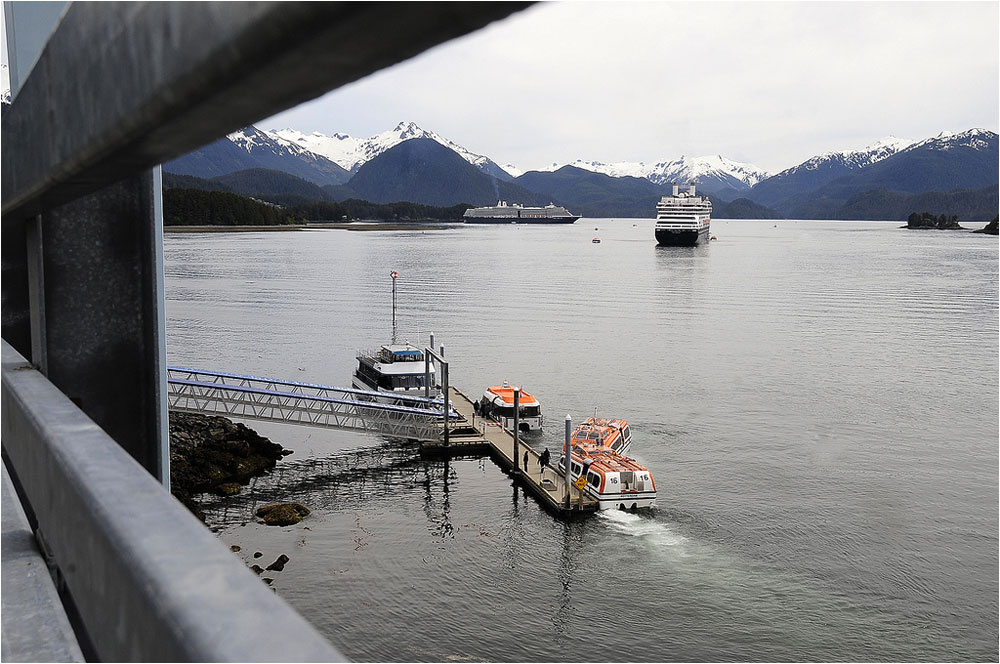
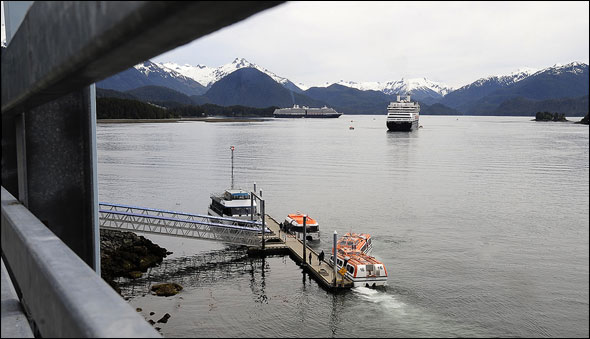


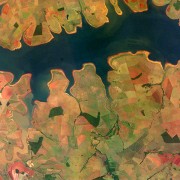
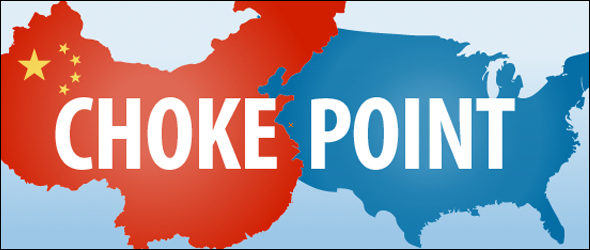


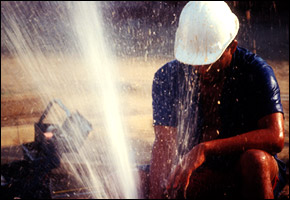



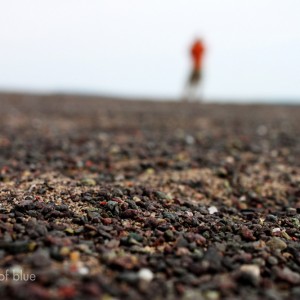
Leave a Reply
Want to join the discussion?Feel free to contribute!